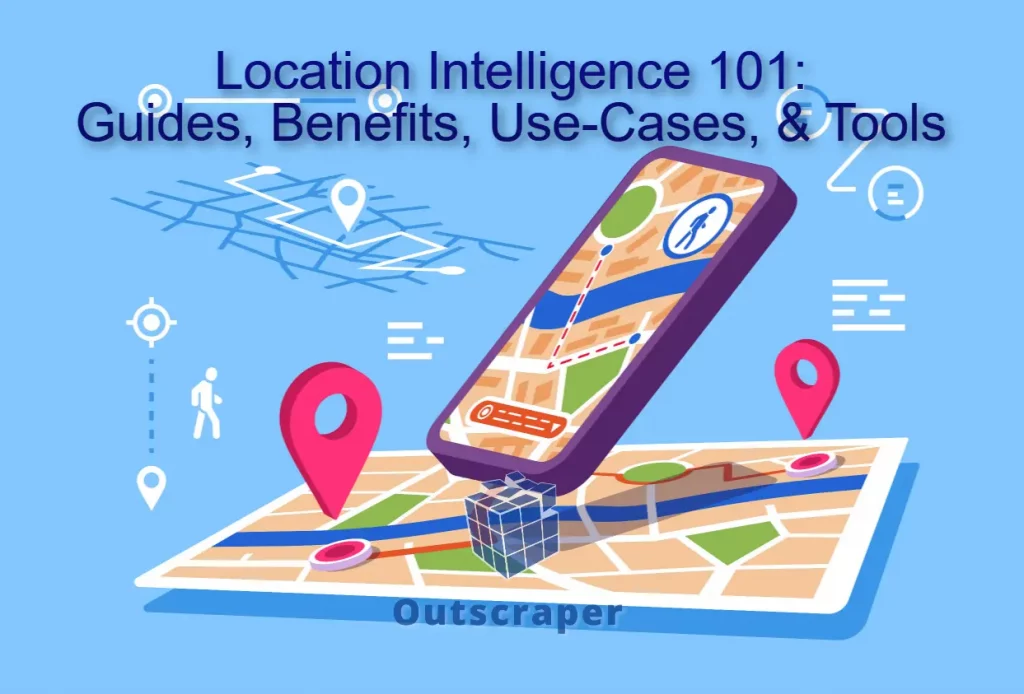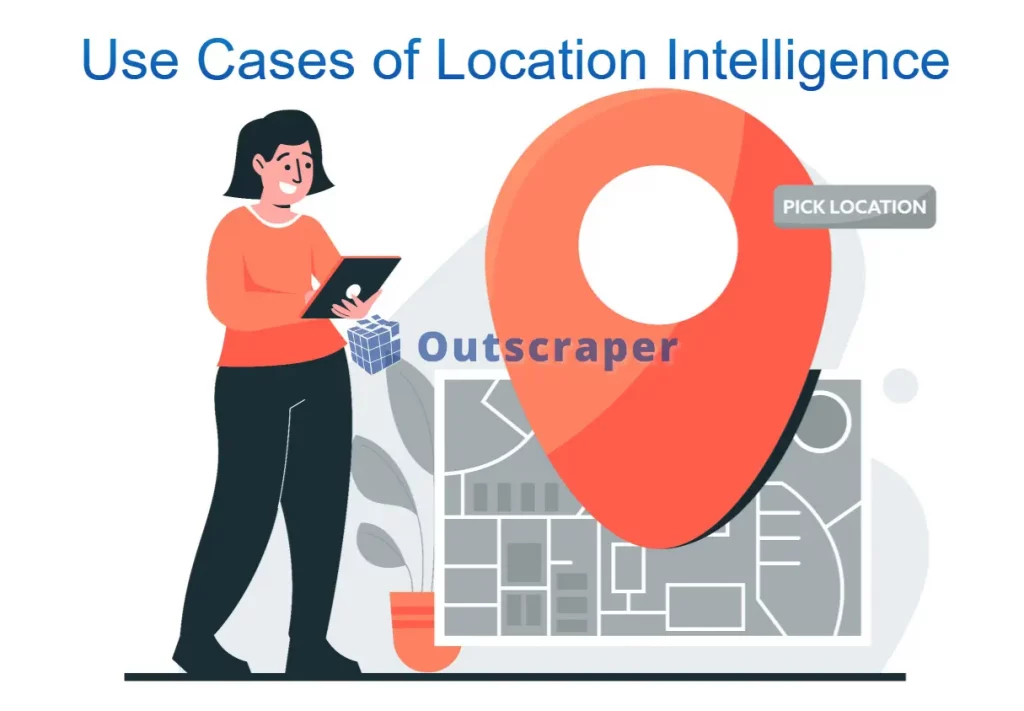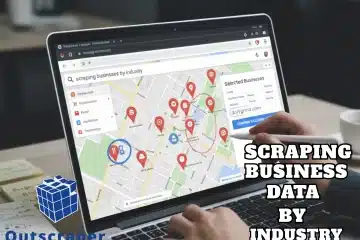Location Intelligence: A Comprehensive Guide, Use Cases, and Top Tools Explained
Introduction to Location Intelligence
Location intelligence (LI) is more than just data. It’s about understanding the world around us in a whole new way. From urban planning to retail, logistics to real estate, LI is the key to unlocking deeper insights, improving operational efficiencies, and driving strategic planning.
Location intelligence is information and insights derived from geospatial data, which is visually mapped by layering data spatially and chronologically. This methodology derives insights from location data to solve problems like site selection, geomarketing, and territory planning.
Layering location-specific data—such as demographics, traffic, environment, economics, and weather—on a smart map or dashboard reveals unique insights. These insights help organizations understand complex patterns and make strategic decisions based on comprehensive geospatial analysis.
One of the most crucial data for location intelligence platforms is Points of Interest (POI). Outscraper integrates top public sources of POI into customers’ platforms. Since Google Maps has a real-time POI database, it can fully fulfill your POI needs when paired with other data sources.
Outscraper’s Google Maps Scraper allows you to retrieve only the required POI data. With its advanced filtering capabilities, you can target specific categories, locations, and other criteria to ensure you will only receive the most relevant data for your business needs.
Any business needs to use location intelligence, and this comprehensive guide will discuss the benefits, use cases, and top tools, which we will explain in this article.
What are the Benefits of Location Intelligence?
Location intelligence has a huge competitive advantage, enabling more accurate and timely data-driven decisions than those without location data. Using location data, companies can identify new opportunities, optimize business operations, and create better and more efficient customer experiences.
- Enhanced Decision Making:
- Location intelligence provides data-driven insights for strategic planning and resource allocation.
- It helps identify trends and patterns that are not evident from non-geospatial data.
- Cost Efficiency:
- Location Intelligence reduces the need for extensive field research and surveys.
- Optimizes logistics and supply chain operations, leading to cost savings.
- Personalization:
- Location Intelligence allows for more targeted marketing campaigns based on regional preferences.
- Enhances customer experience by offering location-specific products and services.
- Competitive Advantage:
- Enables businesses to understand market dynamics and consumer behavior in specific locations.
- Location Intelligence facilitates the discovery of untapped markets and growth opportunities.
What is the Difference Between GIS and Location Intelligence?
Geographic Information Systems (GIS) and Location Intelligence (LI) are closely related but serve different purposes in terms of geospatial data analysis. GIS is a framework for gathering, managing, and analyzing spatial and geographic data. It provides tools for mapping and visualizing data in a spatial context, focusing on storing, retrieving, managing, displaying, and analyzing geospatial information.
Location Intelligence (LI), on the other hand, extends GIS’s capabilities by integrating spatial data with business intelligence tools and methodologies. LI emphasizes deriving actionable insights from geospatial data to inform business decisions and strategies. While GIS provides the technical foundation for mapping and spatial analysis, LI focuses on solving specific business problems such as site selection, geomarketing, and logistics optimization.
- Geographic Information Systems (GIS):
- GIS is a framework for gathering, managing, and analyzing spatial and geographic data. It provides the tools for mapping and analyzing data in a spatial context.
- GIS focuses on storing, retrieving, managing, displaying, and analyzing geospatial data. It is often used by geographers, urban planners, and environmental scientists to create detailed maps and perform complex spatial analyses
- Location Intelligence (LI):
- LI extends the capabilities of GIS by integrating spatial data with business intelligence tools and techniques.
- LI emphasizes deriving actionable insights from geospatial data to inform business decisions and strategies.
What are the Use Cases of Location Intelligence?
Location intelligence is widely used across various industries to enhance decision-making and operational efficiency by leveraging geospatial data. It is useful in multiple industries, such as real estate, retail and e-commerce, travel and hospitality, urban planning, logistics and supply chain, healthcare, telecommunications, and insurance.
- Real Estate:
- Market analysis: LI visualizes geospatial data from real estate listings to help analyze property prices, trends, and demand in specific areas.
- Property Valuation: By integrating data such as amenities, neighborhood demographics, and historical property values, LI provides accurate property valuations and identifies high-demand areas.
- Retail and E-commerce:
- Site Selection: Optimal site selection for new stores as retailers can use LI to determine store locations by analyzing foot traffic, demographics, and competition in different areas, ensuring new stores are strategically placed to attract maximum customers.
- Customer Behavior: Understanding regional preferences and customer behavior by analyzing regional preferences and trends through customer reviews and social media mentions. Retailers can tailor their marketing strategies and product offerings to meet specific needs.
- Travel and Hospitality:
- Tourism Insights & Competitor Performance: LI helps track tourist movement patterns and identify popular destinations and emerging travel trends. Businesses could compare pricing, occupancy rates, and competitors’ customer feedback in various locations.
- Tourism Areas Identification: LI could help entrepreneurs identify popular destinations and attractions.
- Urban Planning:
- Infrastructure Planning, Development, and Traffic Management: Urban planners use LI to analyze population growth, density, and traffic patterns, informing decisions about new infrastructure projects such as roads, schools, and hospitals.
- Environmental Monitoring: By monitoring environmental factors such as air quality, noise levels, and green spaces, LI helps make informed decisions about urban development and sustainability.
- Logistics and Supply Chain:
- Route Optimization: Logistics and supply chain companies use LI to analyze traffic patterns, road conditions, and delivery locations, optimizing routes to reduce delivery times and costs.
- Warehouse Location: Companies can strategically place warehouses to improve supply chain efficiency by evaluating proximity to major transportation hubs, customer locations, and regional demand.
- Healthcare
- Resource Allocation: Healthcare providers use LI to map the distribution of healthcare facilities, patient demographics, and disease outbreaks, ensuring resources are allocated where they are most needed.
- Emergency Response: LI helps plan and optimize emergency response strategies by analyzing the geographic distribution of incidents and response times.
- Telecommunications
- Network Optimization: In the telecommunications industry, companies use LI to analyze network performance, customer distribution, and service demand, optimizing the placement of cell towers and network infrastructure.
- Service Expansion: Companies and businesses can identify underserved areas with high potential demand, and telecom providers can strategically expand their services to new regions.
- Insurance
- Risk Assessment: Insurance companies utilize location intelligence to assess risks based on geographic factors such as flood zones, crime rates, and natural disaster history.
- Claims Management: By visualizing the locations of claims and incidents, insurers can detect fraud patterns and improve their claims management processes.
Commonly Cited Applications of Location Intelligence
The commonly cited applications of location intelligence are vital because they enhance decision-making, optimize operations, and drive strategic planning across various industries.
- Retail Site Selection
- Real Estate Market Analysis
- Tourism Analysis
- Urban Development Planning
- Environmental Monitoring
- Healthcare Resource Allocation
- Telecommunications Network Planning
- Insurance Risk Assessment
- Emergency Response Planning
- Logistics Optimization
What are the Location Intelligence Tools?
Location Intelligence tools are essential for analyzing and visualizing geospatial data, enabling organizations to make informed decisions based on geographic insights. Some of the most recognized location intelligence tools include Google Earth Engine, Google Maps Scraper, Esri ArcGIS, Quantum GIS (QGIS), Mapbox, Geopandas, Carto, MapInfo Professional, and Outscraper’s Traffic Extractor.
The LI tools provide essential functionalities for collecting, analyzing, visualizing, and sharing geospatial data, empowering organizations to utilize location for informed decision-making and problem-solving.
- Google Earth Engine: A cloud-based platform for large-scale geospatial data analysis and visualization.
- Google Maps Scraper: One of Outscraper’s most popular scraping tools, Google Maps Scraper enables businesses to easily access and analyze location data, providing location intelligence insights.
- Esri ArcGIS: A comprehensive GIS suite for mapping, spatial analysis, and sharing geospatial information.
- QGIS (Quantum GIS): Open-source GIS application offering robust data visualization, editing, and analysis capabilities.
- Mapbox: Platform for building custom maps and spatial applications, providing tools for designing maps, visualizing location data, and integrating geospatial features into web and mobile apps.
- Geopandas: A Python library that extends pandas for geospatial data operations.
- Carto: A location intelligence platform for creating interactive maps and performing spatial analysis.
- MapInfo Professional: A desktop GIS software solution for mapping and spatial analysis.
- Google Maps Traffic Extractor: This is a service from Outscraper that will give you traffic data extracted from two points in Google Maps.
Conclusion
Location Intelligence (LI) is a powerful tool that transforms geospatial data into actionable insights, helping businesses across various industries make informed decisions and optimize their operations. By layering data such as demographics, traffic, environment, and economics on smart maps or dashboards, LI enables organizations to visualize and analyze complex patterns.
This comprehensive analysis helps make informed decisions, optimize operations, and enhance strategic planning. Key applications include real estate market analysis, retail site selection, logistics optimization, urban planning, and healthcare resource allocation. Unlike traditional Geographic Information Systems (GIS), which focus on mapping and spatial analysis, LI integrates spatial data with business intelligence tools to solve specific business problems and drive operational efficiencies.
Adopting advanced location intelligence tools like Google Earth Engine, Esri ArcGIS, QGIS, Mapbox, and Outscraper empowers organizations to harness the full potential of geospatial data. These tools facilitate the collection, analysis, and visualization of location data, enabling businesses to identify new opportunities, optimize resource allocation, and improve customer experiences.
Pay as you go without monthly subscription fees. 50 free searches per month. Sign up and try it for free now.
FAQ
Most frequent questions and answers
Google Map scraping, harvesting, or extracting is a process of getting all the information about places (name, address, coordinates, site, phone, working hours, etc.) from the Google Maps site. It automates manual exporting of the data.
- Login to Google Maps scraper.
- Select categories you want to extract.
- Select locations from the dropdown.
- Select language and check other advanced parameters.
- Click “Scrape data”.
Location intelligence data involves analyzing geographic or spatial data to derive insights for decision-making. Key aspects include:
- Data Sources: GPS, satellite imagery, census data, etc.
- Spatial Analysis: Examining patterns and trends in geographic data.
- Visualization: Using tools like GIS to display data on maps.
- Applications:
- Business: Optimal store locations.
- Urban Planning: Infrastructure development.
- Healthcare: Tracking disease outbreaks.
- Real Estate: Assessing property values.
- Environment: Monitoring land use changes.
- Transportation: Optimizing delivery routes.
In essence, location intelligence helps in making informed decisions based on geographic data.
No. All scraping activities occur on Outscraper servers, ensuring that your IP address is not utilized for data scraping. You can close your computer an the scraping task will still be running.
Scraping and extracting of public data is protected by the First Amendment of the United States Constitution.




